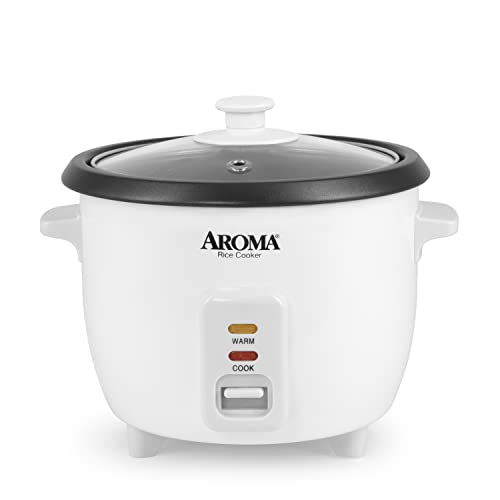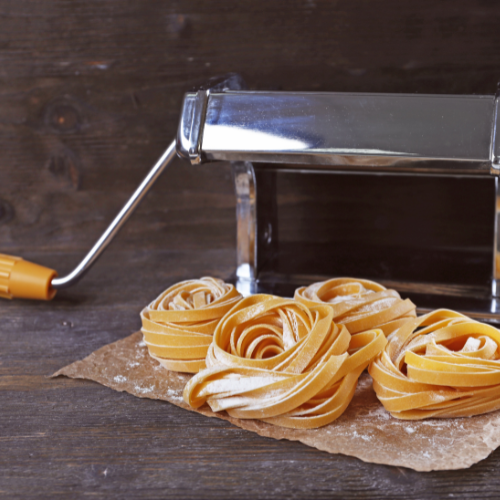How to cook basmati rice
Introduction
Basmati rice, with its long, slender grains and delicate aroma, is a staple in many cuisines around the world. The name "basmati" itself translates to "fragrant" in Hindi, which aptly describes this rice variety's enchanting scent and flavor. Originating from the Indian subcontinent, basmati rice has a rich history dating back thousands of years.
Ancient Origins and Cultural Significance
The story of basmati rice can be traced back to the foothills of the Himalayas, where it was first cultivated in the fertile regions of present-day India and Pakistan. This aromatic grain has been an integral part of traditional Indian cuisine for centuries, with references to basmati rice found in ancient Sanskrit texts. Not only does basmati rice hold historical significance, but it also carries cultural symbolism.
In many South Asian cultures, offering a plate filled with fragrant basmati rice is seen as an act of hospitality and abundance. Its presence at feasts and celebrations serves as a testament to its revered status among food enthusiasts around the globe.
The Quest for Perfection: Importance of Proper Cooking Techniques
While selecting high-quality basmati rice is essential for achieving exceptional results, mastering the art of cooking this grain is equally crucial. Basmati rice demands precision and attention to detail to unlock its true potential – each grain should be distinct, fluffy, and perfectly cooked.
Proper cooking techniques play a profound role in preserving the delicate texture and nutty flavor that make basmati rice so beloved. Understanding these techniques will empower you to elevate your culinary skills and create memorable dining experiences for yourself and others.
By employing optimal cooking methods, you can transform ordinary meals into extraordinary feasts. Whether you are planning a sumptuous biryani, a delectable pilaf, or simply serving basmati rice as a side dish, implementing the right techniques will ensure that each grain is a delightful delight to savor.
Understanding Basmati Rice
Characteristics and Unique Qualities of Basmati Rice
Basmati rice, known for its long, slender grains, is a highly prized variety of rice that originated in the Indian subcontinent. It is renowned for its delicate fragrance and distinct flavor, making it a popular choice for various dishes across different cuisines.
One of the key characteristics of basmati rice is its elongated grain structure, which remains separate and fluffy after cooking. This quality allows it to absorb flavors while maintaining a light texture.
The grains have a slightly nutty aroma that adds depth to any dish they are incorporated into. In addition to its physical attributes, basmati rice also possesses unique qualities that set it apart from other types of rice.
One such characteristic is its low starch content compared to short-grain rice varieties. This lower starch content contributes to the fluffy texture and prevents the grains from sticking together when cooked correctly.
Another noteworthy attribute of basmati rice is its ability to elongate during cooking without becoming overly soft or mushy. This quality makes it ideal for pilafs, biryanis, and other dishes where distinct individual grains are desired.
Different Varieties and Their Flavor Profiles
Basmati rice comes in various varieties, each with its own flavor profile and culinary applications. Among the most well-known varieties are Indian basmati and Pakistani basmati.
Indian basmati typically has longer grains with a delicate floral aroma and a subtle nutty flavor. It pairs excellently with aromatic spices like saffron, cardamom, or cinnamon in traditional Indian cuisine.
Pakistani basmati rice tends to have shorter grains but shares similar characteristics with Indian basmati regarding fragrance and flavor profile. It often exudes an earthy aroma along with hints of sweetness when cooked properly.
Other varieties, such as American, Thai, or Texmati basmati rice, have emerged in different parts of the world but still retain the essential qualities and fragrance associated with traditional basmati rice. Each of these varieties offers a unique flavor profile and can be adapted to different culinary styles.
Understanding the distinctive characteristics and flavors of various basmati rice varieties allows chefs and home cooks alike to select the perfect type for their desired dishes. Whether you are aiming for a fragrant biryani or a comforting rice pudding, choosing the appropriate variety of basmati rice is crucial in achieving authentic taste and texture.
Preparing Basmati Rice for Cooking
Sorting and rinsing the rice to remove impurities
When it comes to cooking basmati rice, one crucial step that should never be overlooked is sorting the grains. This meticulous process involves visually inspecting the rice and removing any foreign particles or damaged grains.
By meticulously sorting through the rice, you ensure that only the highest quality grains make it into your final dish. Foreign particles such as small stones, bits of husk, or other debris can be found in even the finest brands of basmati rice.
These particles not only compromise the quality and appearance of your cooked rice but can also affect its taste and texture. By carefully removing these impurities, you are taking a proactive step towards ensuring a pure and delightful dining experience.
The importance of sorting to remove foreign particles or damaged grains
Sorting basmati rice is more than just a superficial act; it is an essential practice that plays a significant role in achieving perfectly cooked rice. When foreign particles or damaged grains are present in your uncooked basmati, they can negatively impact both the flavor and texture of the final dish. Foreign particles have a way of absorbing moisture during cooking, resulting in unevenly cooked or soggy portions within your batch of rice.
Additionally, damaged grains tend to release excess starch during cooking, leading to clumpy and sticky results. By meticulously sorting through your basmati rice before cooking, you eliminate these potential nuisances and set yourself up for success in creating fluffy individual grains with an ideal texture.
Rinsing techniques to eliminate excess starch
After sorting through your basmati rice, it is crucial to rinse it thoroughly before proceeding with cooking. Rinsing serves two essential purposes: removing surface dust or dirt acquired during storage and eliminating excess starch from the exterior layer of each grain.
To rinse basmati rice effectively, place it in a fine-mesh sieve or colander and hold it under cold running water. Gently swish the rice around with your fingers, allowing the water to flow through the grains.
Repeat this process until the water runs clear, indicating that most of the starch has been removed. By rinsing the rice and eliminating excess starch, you prevent it from becoming overly sticky or clumpy during cooking.
This step is particularly crucial in achieving perfectly cooked basmati rice with distinct individual grains that are light and fluffy in texture. Remember, by taking the time to sort your basmati rice carefully and rinsing it properly, you lay a solid foundation for a delightful culinary experience.
These seemingly small steps contribute significantly to enhancing both the appearance and texture of your cooked basmati rice. So, indulge in this preliminary ritual before proceeding to cook your chosen recipe with confidence!
Choosing the Right Cooking Method
Stovetop method:
The stovetop method is a classic way to cook basmati rice and allows for precise control over the cooking process. One popular technique is the absorption method, which ensures fluffy and separate grains. To start, measure the desired amount of basmati rice and rinse it thoroughly to remove excess starch.
Then, in a heavy-bottomed pot with a tight-fitting lid, add the rinsed rice and water in a specific ratio. The general rule of thumb is to use 1.5 cups of water for every cup of rice for a medium-textured grain.
For different textures like firm or soft grains, you can adjust the ratios accordingly. For firmer grains, reduce the amount of water slightly—about 1.25 cups per cup of rice—and for softer grains, increase it slightly—around 1.75 cups per cup of rice.
Once you've added the water, bring it to a boil over medium-high heat with the lid off and then reduce the heat to low and cover tightly. Achieving even heat distribution during cooking is crucial for uniform results.
To ensure this, use a pot with a thick bottom that conducts heat evenly without hot spots or invest in a diffuser placed between your pot and stovetop burner. This will distribute heat more evenly across the base of your pot, preventing any scorching or uneven cooking.
Rice cooker method:
Using a rice cooker provides convenience and consistently excellent results when cooking basmati rice. Rice cookers automatically adjust temperature and cooking time based on moisture levels detected within the appliance's inner pot. To utilize this method effectively, first measure your desired amount of basmati rice using the provided measuring cup that comes with most rice cookers; typically one cup yields about three cups of cooked rice.
Rinse the rice thoroughly, draining the starchy water. One of the key advantages of using a rice cooker is its ability to adjust water levels based on your desired texture.
For a fluffier texture, add slightly less water than you would for stovetop cooking—around 1.25 cups per cup of rice. Conversely, if you prefer softer grains, increase the water slightly to approximately 1.5 cups per cup of rice.
After adding the rinsed and measured rice and appropriate water levels to the cooker's inner pot, simply press the "cook" button and let the machine work its magic. The built-in sensors will detect when all moisture has been absorbed, and once done, most rice cookers will automatically switch to a "keep warm" setting.
Whether you choose the stovetop method or opt for a rice cooker, both techniques offer distinct advantages for cooking basmati rice. The stovetop method allows for more precise control over heat distribution and ratios while ensuring fluffy grains through the absorption method.
Alternatively, a rice cooker offers convenience and consistently perfect results by adjusting cooking times and adapting to different moisture levels detected in the pot. Whichever method suits your preferences best, mastering these techniques will elevate your basmati rice cooking prowess to new heights!
Enhancing the Flavor and Aroma
A. Adding spices, herbs, or aromatics during cooking. When it comes to cooking basmati rice, the addition of spices, herbs, and aromatics can elevate its flavor profile to new heights. By carefully selecting and incorporating these ingredients during the cooking process, you can infuse your rice with delightful fragrances and tantalizing tastes that will leave your taste buds craving for more. One popular choice for enhancing basmati rice is to add aromatic spices like cinnamon sticks, cardamom pods, or bay leaves. These ingredients have unique flavors that complement the natural nuttiness of basmati rice. To incorporate them effectively into your dish, start by heating a small amount of oil or ghee in a pan. Once heated, add the desired spices and gently toast them for a minute or two until their aroma is released. Tip: For a milder flavor infusion, you can lightly bruise cardamom pods before adding them to allow their oils to be released more efficiently during cooking.
B. Choosing complementary flavors such as cinnamon sticks, cardamom pods, or bay leaves The choice of complementary flavors when cooking basmati rice largely depends on personal preference and the overall taste profile you wish to achieve. While spices like cinnamon sticks bring warmth and sweetness to your dish, cardamom pods contribute hints of citrusy freshness. Bay leaves impart a subtle earthiness that pairs exceptionally well with savory dishes. Incorporating these flavors into your basmati rice is simple yet impactful. After rinsing the rice thoroughly and soaking it (if desired), add the previously toasted spices directly into the water along with some salt before bringing it to a boil. Doing so allows all those wonderful flavors to infuse the rice grains as they cook, resulting in a fragrant and tantalizing dish that will captivate your senses. Tip: If you prefer a more intense flavor, you can gently crush the spices before adding them to the water. This will help release their essential oils, intensifying their impact on the final dish.
Tips on when to add these ingredients during the cooking process
The timing of adding spices, herbs, and aromatics during the cooking process plays a crucial role in determining their influence on your basmati rice. To achieve a harmonious blend of flavors throughout your rice, it is essential to understand when to incorporate these ingredients. While some spices like cardamom pods can be added directly into the water at the beginning of cooking, others like bay leaves are better added towards the end.
Bay leaves tend to release their aroma quickly and can become overpowering if cooked for too long. Adding them during the last few minutes of simmering ensures they impart just enough flavor without overwhelming other elements of your dish.
Tip: If you desire an even distribution of flavors throughout your basmati rice, consider creating layers by alternating between adding spices and rice as you build up your pot or cooker. This method allows each grain to absorb a balanced infusion of all the aromatic elements present.
Troubleshooting Common Issues
Preventing Sticky or Mushy Rice: Proper Water-to-Rice Ratio
To achieve perfectly cooked and fluffy basmati rice, one must pay careful attention to the water-to-rice ratio. The ideal ratio is typically 1.5 cups of water for every cup of rice.
However, this can vary slightly depending on personal preference. For firmer rice, reduce the water slightly, and for softer grains, add a touch more water.
Remember that basmati rice needs less water compared to other types of rice due to its long-grain nature and lower starch content. In addition to the ratio, rinsing the rice thoroughly before cooking is crucial to remove excess starch.
This prevents clumping and stickiness in the final result. Soaking the rice for 15-20 minutes after rinsing can also help achieve fluffier grains by allowing them to absorb some moisture before cooking.
Adjusting Cooking Time Based on Desired Texture
Cooking time plays a significant role in determining the texture of your basmati rice. It's essential to follow package instructions as a general guideline but also make adjustments based on personal preferences and stove conditions.
For firmer grains with a slight bite, reduce cooking time by a few minutes from what's stated on the packaging. On the other hand, if you prefer softer and more tender grains, extend the cooking time accordingly.
Remember that different brands or varieties of basmati rice may have slight variations in cooking times due to variations in moisture content or grain quality. Therefore, it's always advisable to test a small quantity during your first attempt with a new batch or brand.
Avoiding Burnt or Undercooked Grains: Maintaining Optimal Heat Levels
One common pitfall when cooking basmati rice is ending up with undercooked grains or burnt rice at the bottom of the pot. To ensure evenly cooked rice, maintaining optimal heat levels is vital.
Start by bringing the water and rice to a gentle boil over medium heat. Once boiling, reduce the heat to low and cover the pot tightly with a lid.
This helps trap steam and ensures even cooking throughout. Avoid lifting the lid during cooking, as it can disrupt the process and result in unevenly cooked rice.
Once the cooking time is complete, remove the pot from heat but keep it covered for an additional 5-10 minutes. This resting period allows any remaining steam to be absorbed by the grains, resulting in perfectly tender basmati rice.
Conclusion
Cooking basmati rice may seem like a challenging task at first, but with proper techniques and attention to detail, you can master this art effortlessly. By following these troubleshooting tips such as maintaining optimal heat levels, adjusting water-to-rice ratio based on desired texture, preventing stickiness through rinsing and soaking, you will soon be able to prepare flawlessly cooked basmati rice every time. Remember that practice makes perfect when it comes to culinary endeavors.
Don't be discouraged if your first attempts don't yield ideal results – learning from experience is part of becoming a skilled cook. So embrace this journey with enthusiasm and patience, knowing that each step brings you closer to achieving culinary excellence in preparing delectable basmati rice dishes that will delight your taste buds and those of your loved ones.

































































